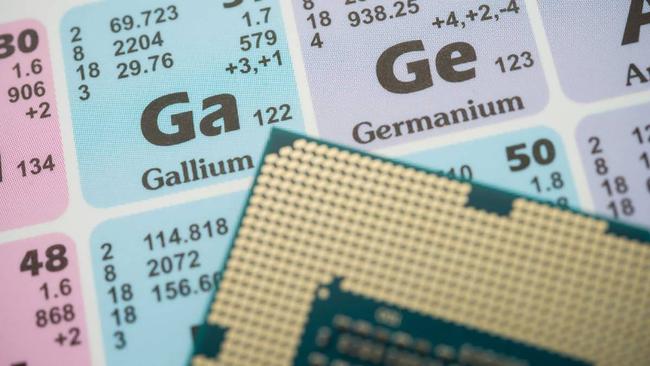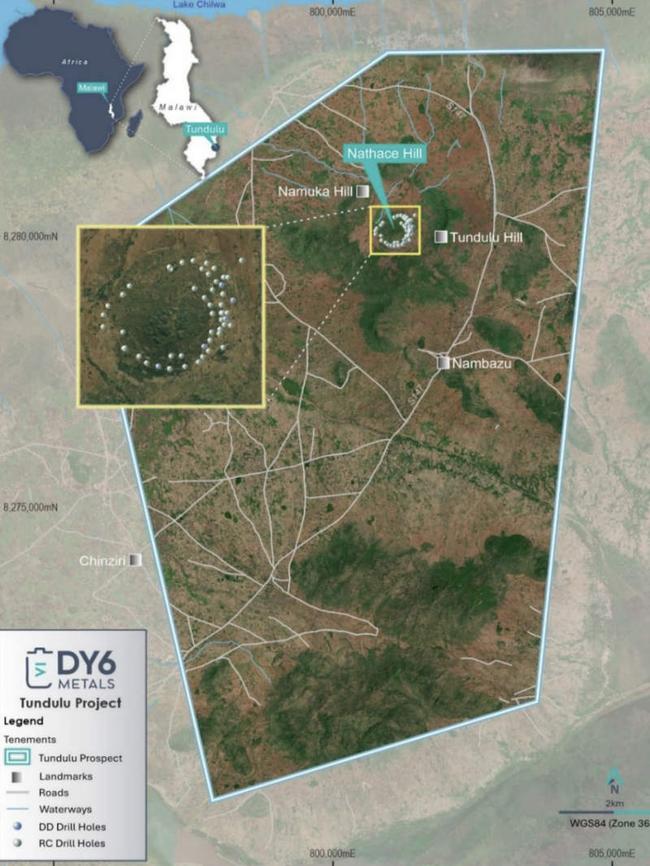DY6 Metals finds valuable gallium at Tundulu REE and phosphate project
DY6 Metals has uncovered gallium that corresponds positively with rare earths mineralisation at its Tundulu project in Malawi.

Stockhead
Don't miss out on the headlines from Stockhead. Followed categories will be added to My News.
DY6 Metals’ review uncovers high-grade, shallow gallium mineralisation at its Tundulu project
Positive correlation found between gallium and TREO mineralisation though more research is needed
Preliminary metallurgical testwork underway to determine potential to produce separate rare earth and phosphate concentrate
Special Report: DY6 Metals’ review of historical drilling and trenching has indicated that potentially high-grade, shallow gallium mineralisation is present at its Tundulu rare earths and phosphate project in Malawi.
Notable intersections uncovered by the review include:
- 74m at 93.26g/t gallium oxide and 1.56% total rare earth oxides from 72m, including
14m at 202.79g/t Ga2O3 from 89m and a top interval of 310.46 g/t Ga2O3, 5.68% TREO from 97m to 98m - 53m at 72.79g/t Ga2O3 and 1.02% TREO from surface including 12m at 145.07g/t Ga2O3 from 25m; and
- 30m at 94.63g/t Ga2O3 and 4.03% TREO from surface.
DY6 Metals (ASX:DY6) noted the gallium mineralisation was open at depth as while some of the elevated results occurred within the saprolite clays, others occurred deeper within fresh rock with no assaying done for deeper potential.
There is also plenty of room for more mineralisation to be found as just 40% of the highly prospective area around the Nathace and Tundulu hills target areas have been drill-tested.
Should the company establish the presence of significant gallium, it could add a valuable byproduct to the already heady product mix at Tundulu.
Prices of gallium, used in the manufacture of electronics and semiconductors, have risen steadily in recent years due to growing demand. Supply security has been eroded significantly by export restrictions placed by dominant producer China.

Historical gallium drilling
Gallium intersections were noted in 27.7% of the 4901 samples from historical diamond and reverse circulation drilling carried out in 2014 that the company assayed for the critical mineral.
Data indicates there is a positive relationship between the gallium and TREO mineralisation though the trend lines suggest that further research on the relative contents of individual lithologies is required.
DY6 has commissioned Auralia Metallurgy to conduct preliminary metallurgical testwork on a select bulk sample from Tundulu and determine the deposit’s suitability to produce a separate rare earth and phosphate concentrate.
Tundulu project
The 91.5km2 Tundulu project comprises several hills in a ring around a central vent called Nathace Hill, where the majority of historical surface sampling and drilling has been undertaken and identified heavy REE mineralisation.
Exploration undertaken by Japanese International Cooperation Agency in 1988 drilling down to a depth of 50m included a hit of 41m at 3.7% TREO from 8m.
A subsequent 55-hole drill program totalling 7000m targeting various elevations on the eastern slope of Nathace Hill in 2024 defined several mineralised zones with assays topping up at 101m at 1.02% TREO and 3.6% phosphate.
The rare earth carbonatite shows the highest grades of REE whilst the other areas host mineral apatite and showed phosphate grades ranging from ~5-30% P2O5.
Sampling carried out by the company found mineral rich carbonatite at the previously unexplored Tundulu Hill and Makhanga Hill to the east and west of Nathace respectively.
This article was developed in collaboration with DY6 Metals, a Stockhead advertiser at the time of publishing.
This article does not constitute financial product advice. You should consider obtaining independent advice before making any financial decisions.
Originally published as DY6 Metals finds valuable gallium at Tundulu REE and phosphate project


